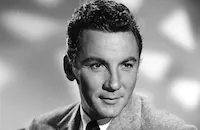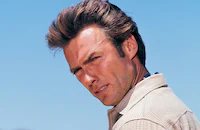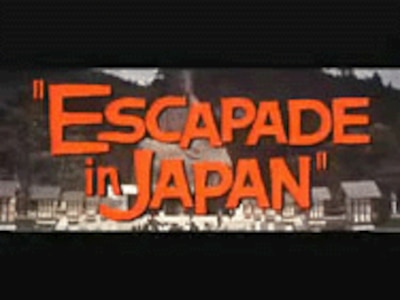Escapade in Japan

Brief Synopsis
Cast & Crew
Arthur Lubin
Teresa Wright
Cameron Mitchell
Jon Provost
Roger Nakagawa
Philip Ober
Film Details
Technical Specs

Synopsis
In Tokyo, Japan, American diplomatic attaché Richard Saunders and his wife Mary await their seven-year-old son, Tony, who is flying to meet them. While Mary, who has learned that Dick had an affair at his last post, informs her husband that she is planning to leave him, Tony's plane experiences engine failure and plunges into the ocean. By morning, Dick and Mary are frantic with worry, and the American embassy sends Col. Hargrave to keep them updated on the rescue operation. After fifteen hours, the first record of survivors is released, but when Tony's name is not among them, Hargrave reluctantly reveals that a heavy fog over the ocean is making the rescue difficult. Meanwhile, while sailing off the Japanese coast, fisherrman Kei Tanaka and his wife Michiko spot an unconscious Tony floating in a life raft, and pull him onboard. They nurse him back to health, aided by their young son Asahiko, nicknamed Hiko, who speaks halting English. Soon, Hiko teaches Tony to use chopsticks, while Tony teaches Hiko to play with a yo-yo. Once they reach the Tanakas' village, however, Hiko overhears his parents discussing the imminent arrival of the police, and wrongly assuming that Tony is in trouble, runs away with his new friend. When the Saunderses learn of Tony's rescue, they race to the village, only to find that both boys have disappeared. Although Mary and Michiko cannot converse, they feel connected in their mutual concern for their sons. The two boys hop on a truck, hoping to reach Tokyo, which Hiko vaguely knows is "over the mountains." When the truck gets a flat tire, they find a nearby farmhouse, where the kind residents feed them. They sleep in the barn, and are at first frightened by the dark but finally fall asleep in each other's arms. In the morning, they illegally board a train and talk about why their eyes have different shapes. Meanwhile, Mary grows more anxious, but after the farmers report having seen the boys, Japanese policeman Capt. Hibino publishes Tony's photograph in all of the country's newspapers and vows that they will be found soon. The children jump off the train in Kyoto and spend the day wandering past temples and through the marketplace. They dodge the police by slipping into a burlesque theater, where they worry that the women may be cold without their clothes. That night, the boys are welcomed into a geisha house, but after Hiko overhears the head geisha plan to call the police, the boys slip out at dawn. To avoid the increased police activity, they board a school bus, and there meet pretty schoolgirl Dekko, who agrees to hide them. After the teacher leads the children on a tour of important temples, they share Dekko's lunch. By the end of the day, however, the other children see Tony's photograph in the paper and inform the teacher. He calls the police, who notify the Saunderses and Hibino. As Hibino orders a search of Kyoto, however, the frightened boys hop on another train. There, an American G.I. buys them ice cream, but when he sees the newspaper story about the missing boys, calls the embassy. Hibino sets up a roadblock at Nara, the end of the train line, but the children escape into the city. Chased by the police, they climb several flights of stairs at a pagoda, stopping only when they have scrambled out onto the slanted roof and are perched high above the street. The Saunderses arrive as a crowd gathers below, and Dick races up to save the boys. Aided by the police, he crawls onto the ledge and pulls the boys to safety. Dick carries Tony to Mary's waiting arms, and while looking into Dick's eyes,she promises the boy that no one will separate the family again. When Dick turns to Hiko, however, the still-frightened boy runs away, and Dick catches him once again. Soon, everyone gathers at the Tanakas', where Dekko arrives to reunite with her new friends.

Director
Arthur Lubin
Cast

Teresa Wright

Cameron Mitchell
Jon Provost
Roger Nakagawa

Philip Ober
Kuniko Miyake
Susumu Fujita
Katsuhiko Haida

Tatsuo Saito
Hideko Koshikawa
Urego Egawa
Frank Tokunaga
Ayako Hidaka

Clint Eastwood
Pfc. Steve Mcgrover
Leticia Bahia
Father Francis Caffrey
Alice Cunningham
Capt. L. Reday
Mary Gilchrist
Miss Fukuha
Miss Hisayo
Tsuyako Okajima
Sheri Kuni
Keiko Yashioji
Yoshiko Terao
Rintaro Fujima
Koryu Sunagawa
Junjaku Ichikawa
Mari Maki
Bob Nakai
Hirotaro Hori
Schinichi Gomi
Dr. Masahiko Kitahata
Capt. Ross F. Purdy
Peggy Reday
Ryoichi Ohkura
Eiji Kawanami
Teruo Sawamura
Shinichi Kaji
Kei Nagashima
Jack Takeuchi
Anthony Radecki
Don C. Harvey
John Close
Mila Del Sol
Crew
Al Baalas
Frank Beetson
Ben Chapman
Murray Cutter
George W. Davis
William Dozier
Joan Hathaway
Walter Holscher
Shinz Isa
Lewis Jarrard
Terry Kellum
Jack Lannan
Hal Lierley
Anthony Lombardo
Arthur Lubin
Otto Ludwig
Gordon Mclean
Winston Miller
Winston Miller
Kei Nagashima
George Nogle
Anthony Radecki
Francis J. Scheid
William Snyder
Max Steiner
Ira Stewart
Charles Termini
Stewart Thorne

Film Details
Technical Specs

Articles
Escapade in Japan
Arthur Lubin had played a pivotal role in grooming Clint Eastwood into a bankable star yet Eastwood would leave his mentor behind as soon as his career gained momentum. Escapade in Japan was Eastwood's last film for Lubin and his services were tendered in the space of a single day, netting him $175. (By point of comparison, Eastwood earned $750 for Ambush at Cimarron Pass, in which he was billed below star Scott Brady, who earned $25,000.) Top-billed were Academy Award® winning actress Teresa Wright and stage and film actor Cameron Mitchell, cast as the parents of a young boy (Jon Provost) who has survived a plane crash off the coast of Japan. His scenes shot entirely within the confines of Universal Studios, Eastwood did not join the cast and crew for the transatlantic trip on a TWA Constellation on September 26, 1956. Billeted in Kyoto, the cast worked exhaustively on location six days a week. In their scant off-time, Wright toured the Japanese countryside with her cameras, Mitchell learned kendo and was made an honorary captain of the Kyoto Racket Club tennis team, and juvenile star Jon Provost missed Halloween, Thanksgiving, both his father's and older brother's birthdays, and the start of first grade. Like Eastwood, whose luck would soon change with a featured role on the weekly western Rawhide, Provost would find lasting fame by joining the cast, and later assuming the lead, of the CBS series Lassie in its fourth season.
Hanging over the production of Escapade in Japan like the proverbial dark cloud was the fact that parent studio RKO was on its last legs. Howard Hughes had bought a controlling share of stock in 1948 and his eccentricities and indulgences had kept the profit margin in the red under his ownership. Unable to gain full control of the studio, Hughes sold off his interest to the General Tire Company, which recouped two-thirds of the $25 million sale price by offering the RKO film library for TV broadcasts. Uninterested in making movies, General Tire ceased production in 1957 and sold the RKO lot to Desilu Productions for $6 million. While all this business was still in the negotiation stages, Arthur Lubin was speeding up the pace of principal photography for Escapade in Japan to ensure that his cast and crew's return airfare would be covered. Lubin got his people back to Hollywood, where the passengers were informed upon landing that they no longer had studio contracts. Universal picked up distribution rights for the orphaned Escapade in Japan, which had its world premiere in Clint Eastwood's home town of San Francisco in October 1957.
Producer: Arthur Lubin
Director: Arthur Lubin
Screenplay: Winston Miller
Cinematography: William Snyder
Art Direction: George W. Davis, Walter Holscher
Music: Max Steiner
Film Editing: Otto Ludwig
Cast: Teresa Wright (Mary Saunders), Cameron Mitchell (Dick Saunders), Jon Provost (Tony Saunders), Roger Nakagawa (Hiko), Philip Ober (Lt. Col. Hargrave), Kuniko Miyake (Michiko Tanaka), Susumu Fujita (Kei Tanaka).
C-93m. Letterboxed.
by Richard Harland Smith
Sources:
Clint: The Life and Legend by Patrick McGilligan (St. Martin's Press, 1999)
American Rebel: The Life of Clint Eastwood by Marc Eliot (Harmony, 2009)
Clint Eastwood: A Biography by Richard Schickel (Vintage, 1997)
Aim for the Heart: The Films of Clint Eastwood by Howard Hughes
Charles McGraw: Biography of a Film Noir Tough Guy by Alan K. Rode (McFarland & Co., 2008)
Cameron Mitchell interview by David Del Valle, Psychotronic Video No 19, Winter 1994
Timmy's in the Well: The Jon Provost Story by Jon Provost (Living Legends Publishing Group, 2009)
RKO Radio Pictures: A History of the Original Motion Picture Studio by James P. Snyder

Escapade in Japan
Teresa Wright (1918-2005)
She was born Muriel Teresa Wright in New York City on October 27, 1918. She showed a keen interest in acting in grade school, and by the time she was 19, she made her Broadway debut in Thorton Wilder's Our Town (1938); the following year she scored a hit as Mary, the weeping ingénue in Life with Father (1939). The word was out that New York had a superb young acting talent on hand, and Samuel Goldwyn soon brought her to Hollywood for William Wyler's adaptation of Lillian Hellman's The Little Foxes (1941). She scored an Oscar® nomination for her film debut as Regina Giddens' (Bette Davis), honorable daughter, Alexandria.
She maintained her amazing momentum by scoring two Oscar® nominations the following year for her next two films: as Carol Miniver in Wyler's Mrs. Miniver (Best Supporting Actress Category), and as Lou Gehrig's (Gary Cooper) faithful wife Ellie in Pride of the Yankees (Best Actress Category), and won the Oscar for Miniver. Yet for most fans of Wright's work, her finest hour remains her perfectly modulated performance as young Charlie in Alfred Hitchcock's masterpiece, Shadow of a Doubt (1943). Wright's performance as the self-effacing, impressionable young niece who gradually realizes that her beloved uncle (Joseph Cotton) may have murdered several widows is effective since Wright's air of observation, subtly turns from idol gazing, to a watchful air of caution as the facts slowly being to unravel. 60 years on, fans of Hitchcock still acclaim Wright's performance as an integral part of the film's classic status.
She proved her talents in comedy with the delightful Casanova Brown (1944), but then saw her schedule slow down due to domesticity. After she married screenwriter Niven Busch in 1942, she gave birth to son, Niven Jr., in 1944, and took two years off to look after her family. She soon returned to film with another Wyler project, the Oscar®-winning, post war drama, The Best Years of Our Lives (1946), playing Fredric March's level-headed daughter, Peggy, she again took some time off after giving birth to her daughter, Mary in 1947. On her second attempt to return to the big screen, Wright found her popularity on the wane. Her wholesome image was in sharp contrast of the tougher, more modern women in post-war Hollywood, and her stubborn refusal to pose for any swimsuit or cheesecake photos to alter her image led to her release from Sam Goldwyn's contract.
As a freelance actress, Wright still found some good roles, notably as a young widow in the thriller scripted by her husband, in The Capture; and as a faithful fiancée trying to help Marlin Brandon deal with his amputation in Stanley Kramer's The Men (both 1950). Yet within a few years, she was playing middle-aged mothers in film like The Actress (1953), and The Track of the Cat (1954), even though she was still in her early '30s. By the mid-50s she found work in live television, where she could apply her stage training, in a number of acclaimed shows: Playhouse 90, General Electric Theater, Four Star Playhouse, and The United States Steel Hour.
She took a break from acting when she married her second husband, the playwright Robert Anderson in 1959, (she had divorced her first husband, Busch, in 1952) and was out of the public eye for several decades, save for an isolated theater appearance. When she did return, it was intermittent, but she was always worth watching. In James Ivory's Roseland (1977), a portrait of the New York dancehall; she was poignant as a talkative widow obsessed with her late husband; and as an enigmatic old actress in Somewhere in Time, she nearly stole the picture from leads, Christopher Reeve and Jayne Seymour. She was still active in the '90s, appearing a few hit shows: Murder, She Wrote, Picket Fences; and a final film role in John Grisham's The Rainmaker (1997). She is survived by her son, Niven; daughter, Mary; and two grandchildren.
by Michael T. Toole
Teresa Wright (1918-2005)
Quotes
Trivia
Notes
The working title of this film was Take My Heart. Difficult to read credits of the viewed print were completed by studio production records. The film begins with a written foreword stating that the picture was photographed entirely in Japan, and thanking the United States Far East Air Forces, the Japanese citizenry and public officials, and civil and religious authorities for granting permission for the first time to photograph their sacred spaces.
Although a May 1956 Daily Variety news item announced that Sam Wiesenthal would produce the picture, he was not involved in the final film. Studio press materials list Henry Okawa as "Capt. Hibino," but Katsuhiko Haida played the role in the final film. Nine-year-old Roger Nakagawa, who played "Ashiko Tanaka," made his feature-film debut in Escapade in Japan.















